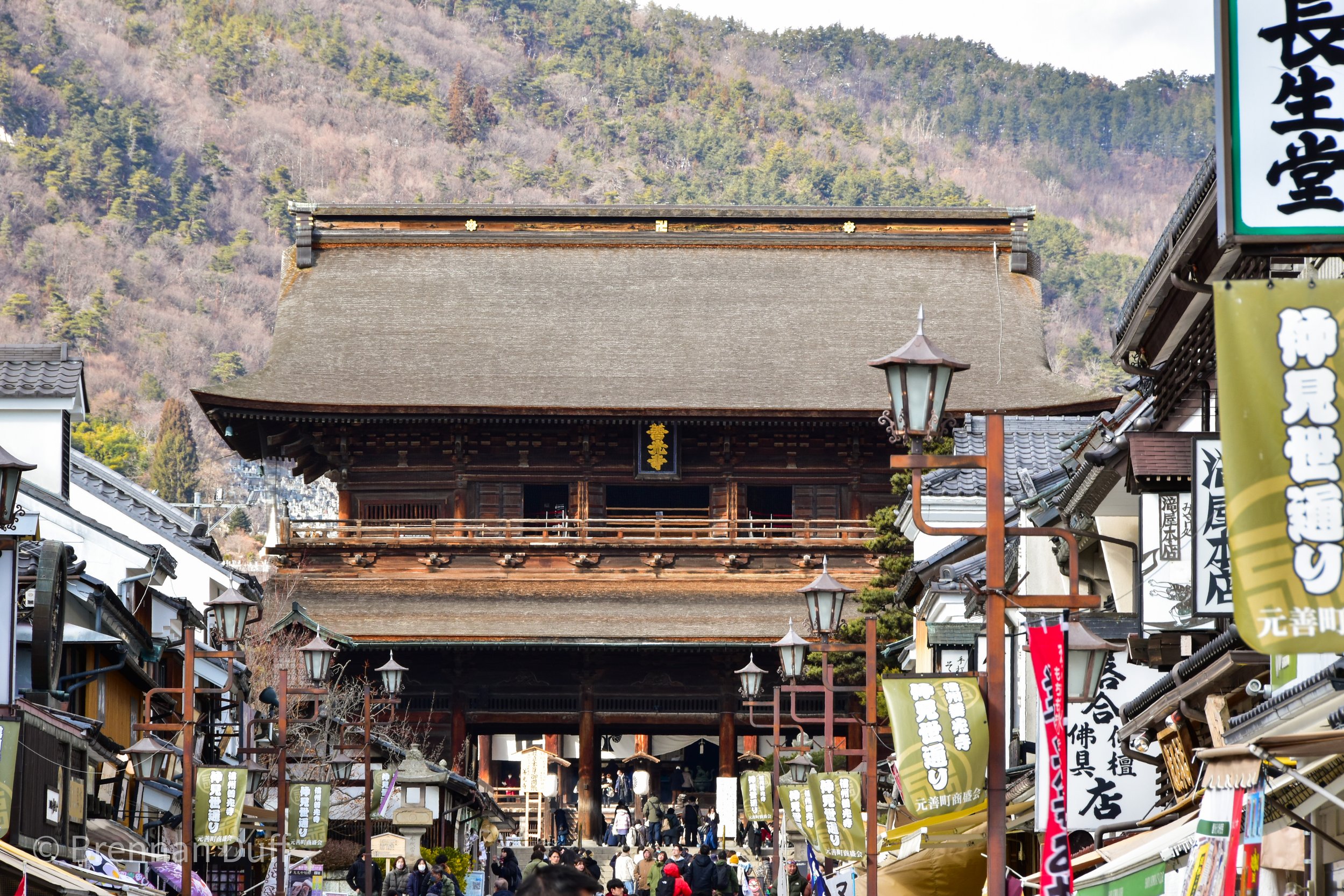Zenkôji
One of the most famous temples in Japan is nestled in northern Nagano city and is actually the complex that the city of Nagano is founded around. Established by and named after Honda Yoshimitsu in 642 C.E. he acquired the first statue of Buddha brought to Japan with the influx of Buddhism from the Korean Penninsula in 552 C.E. Ever since, the temple has been a revered location to all. Even during the Sengoku Period (mid 15th to 17th century C.E.), battles in the Nagano area steered clear of the temple. The statue of Buddha is so sacred that it’s never been put on display in its entire history, though a replica its put on display every six years.
For the educated: 8. For the casual: 8.
Zenkôji is really a beautiful temple and I highly recommend visiting if you have the chance. It’s architectual style is a mix of the flourishing and embellished stylings of Edo Period design and the more natural stylings of Imperial Court architecture. As a result, the buildings tower over their surroundings with gold and copper accents but retain their natural wood finish.
The main road to the temple is on an uphill slope which is lined with souvenir shops, restaurants, cafes, and satelite temple halls. I highly recommend trying some miso ice cream from any of the vendors, it might be the best ice cream I’ve ever had. There’s a lot to see and enjoy as you make your way to the Sanmon, the temple’s main gate rebuilt in 1760 C.E. Visitors can climb the stairs inside and see the Monju Bodshisattva (the bodhisattva of wisdom) and the four Heavenly Kings.
The next gate is the Niomon which represents the boarder of the main temple complex. Between the Niomon and the Sanmon are most of the oldest shops as well as the dormatories (shukubo) where guests can spend the night if they sign up to join the early morning service (Oasaji).
Entrance to the temple is free for everyone unless you want to pray directly to the main buddhist altars. In addition to access to the main altars, visitors can experience the inner chamber below ground. This is a special experience where the guest, with shoes removed, follows the stairs below into pitch black where they follow the wall to find the “Key to Paradise.” This key, which is a real key, is said to provide wisdom, luck, and clarity to any who touch it.




